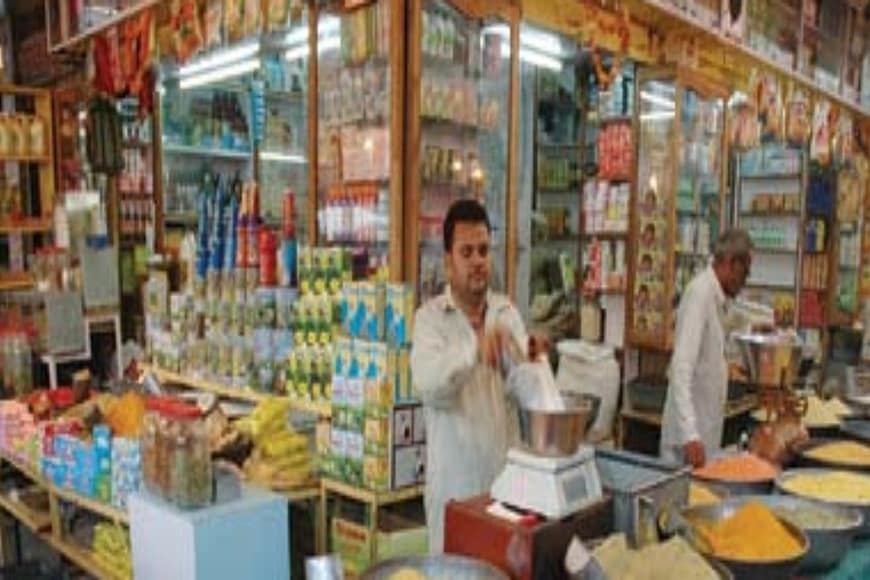Food and grocery retail is the largest segment in the Indian retail sector with an annual spend of $570 billion, around two thirds of the overall retail spend in our country. This is growing at over 10% every year. Though a large number of organised brands have come up in the recent years, 80% of the market share is still controlled by the neighborhood ‘kiranas’ (grocers). Though the largest, it is also the lowest margin segment, and the modern chains find it tough to be profitable in this business. They are always pushing sales through discounts and offers, and many early players have shut shop after failing to scale profitably. On the other hand, some local chains with a smaller footprint are surviving with reasonable profitability.
What fascinates me most about this business is its diversity, variations and ever-evolving range of assortments across all sections of the category. There are also the everchanging needs, aspirations and choices of customer shopping channels, in-store as well as online.
Being a convenience category, customer experience is largely driven by two main factors: (1) availability across the width and depth of the category and (2) the right price of the brand and pack-size of consumer’s choice. Ensuring availability across the width and depth of the category is critical to deliver the best customer experience for all brands.
And this is where the neighborhood grocers have been the winners! They serve only a very small catchment, but 75- 80% of their customers are repeat customers and this helps them to understand the needs and consumption pattern of their customers very well.
This understanding of their catchment consumption helps them draw their assortment plan almost 95% accurately and they do it very well at brand and pack size level. Most of their business is done on MRP with zero marketing budget whereas their modern supermarket competitor is pushing sales through discounts and offers all the time.
During interactions with a range of shoppers during random visits to four different brands of supermarkets and hypermarkets in Pune, most of them complained that they had come with a shopping list but had to leave without one or other item on it. Our common experience shows that it is rare to visit a supermarket or hypermarket and leave with everything you had come for.
And this is true for online shopping as well! After completing the order and paying for it, a message pops up, informing the customer that some of the items are not available, and the amount is either credited to the wallet or refunded to the payment mode.
Most modern retail chains work on not more than 75% ‘fill rate’ – industry jargon for availability – and this is one of the key problems with their profitability. Most of these chains have no idea exactly how much they are losing on sales due to this, and that too on MRP!
Instead of making efforts to find out, they focus their money and energy on pushing sales of products which are not even on the shopper’s list through offers and discounts. It is likely that most modern chains are carrying at least 25-30% more inventory than they need to. This adds to their overall cost of running the business and it naturally impacts their profitability, sometimes, as we have seen, even leading to their doom.
In contrast to local grocers, modern chains run their businesses smartly as marketing partners of the brands and products they stock. Their assortment is largely driven by the marketing initiatives of brands, which also use supermarkets to promote and push their products.
Modern chains need to consciously stock products that their customers want, and not what the brands want to sell! This will help them to build real and purposeful relationships with their customers. They need to become demand-driven, and not run their business on the inventory model.
The chains serve a much larger catchment base, and their businesses run by systems and not with the insight of someone who knows and understands every shopper who visits. They can generate insights on who is buying what, how often and at what price. This knowledge can be useful to prepare their daily assortment plan at the store level, to align with the needs of the shoppers expected each day.
During the last two years of the pandemic, there has been a huge shift in consumer shopping behavior. The trend of working from home has led to demographic shifts. New shopping channels have emerged such as pre-play online, phone ordering, quick commerce, social commerce and others.
Consumer baskets are now divided across these channels. Local grocers by DNA have already understood and aligned to these trends and have taken advantage by adding homedelivery service, not just to hold on to their customer base but to also enhance the share of their shopping wallet.
Modern chains and brands are still planning their assortment and inventory using historic trends and planning practices. It is now time for them to start exploring the use of new sets of artificial intelligence and machine learning (AI-ML) driven technologies to plan their daily assortment based on predicted customer demand and align their inventory with the demand. This will not just help them to scale their availability up to 95% but to also optimise their overall inventory load by almost 25-30%, leading to improved sales and profitability.
New online formats and quick commerce are our new flavours of the season. Is it a real business opportunity or just hype? Let’s take a closer look next time.
This article first appeared in The Business Guardian on 6 June 2022.




You must be logged in to post a comment.